Colorado’s COVID-19 Experience Part 1: How CO is Coping
4/27/20 / Corona Insights

The Corona Insights team wanted to know how Coloradans were holding up during shelter in place, so we conducted a survey! We asked residents about a broad range of topics, including their overall well-being, challenges, concerns, community response, and others.
All posts in this series:
- Colorado’s COVID-19 Experience Part 1: How CO is Coping
- Colorado’s COVID-19 Experience Part 2: Community Response
- Colorado’s COVID-19 Experience Part 3: Past & Future Plans
- Colorado’s COVID-19 Experience Part 4: How COVID-19 Impacts Quality of Life
- Colorado’s COVID-19 Experience Part 5: Types of Worry
This blog is the first in our series to present findings and insights from the data and our analysis. Check back here for deeper analysis of what Coloradans are thinking and doing in these strange times in addition to what residents plan to do as things start to return to normal.
Quality of Life During a Pandemic
One of the first goals of our survey was to establish a baseline of Coloradans’ wellbeing during these extreme circumstances. We asked respondents to rate their quality of life on a scale of 0 (not good at all) to 10 (great) right now, and retrospectively before the start of the COVID-19 situation. Unsurprisingly, the average quality of life score during COVID-19 pandemic dropped from a 7.8 to a 6.4, or by about 18%. Most Coloradans (63%) reported a decrease in their quality of life, but rural areas appear to have been the least impacted. Residents from rural counties only experienced a 13% drop on average. Almost half (43%) of respondents who said they lived outside of a city or town reported the same quality of life during the pandemic as before, compared to only 30% of the state overall.
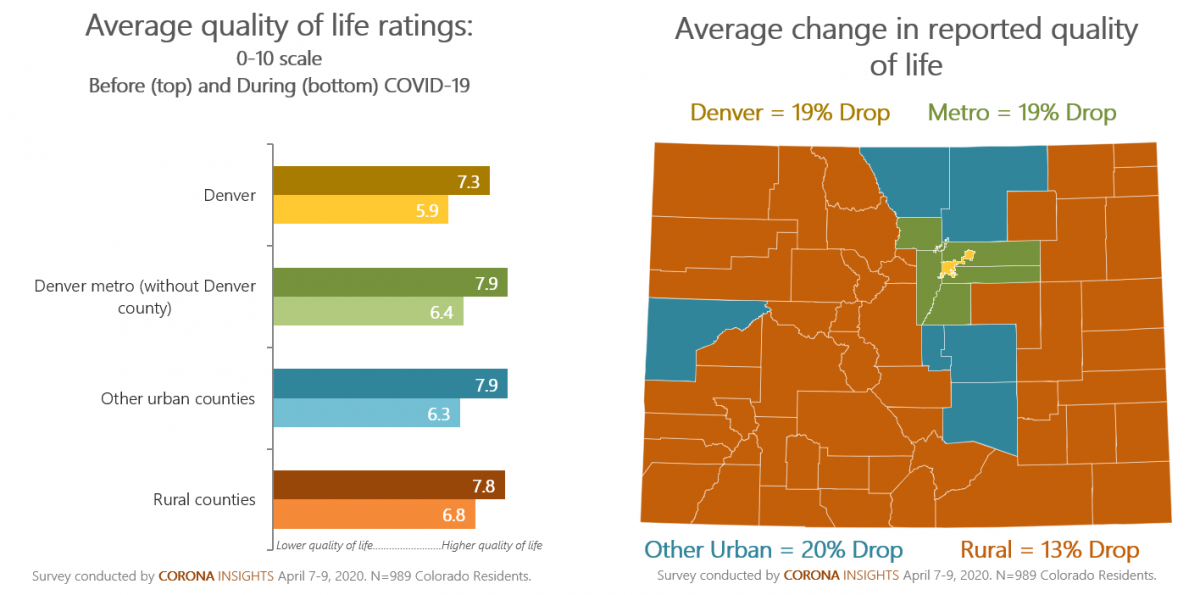
Top Concerns
After assessing quality of life, we were curious to know how concerned the state’s residents were on a series of topics. We asked respondents to rate their concern on a scale of 0 (no concern) to 10 (great concern), across a series of topics.
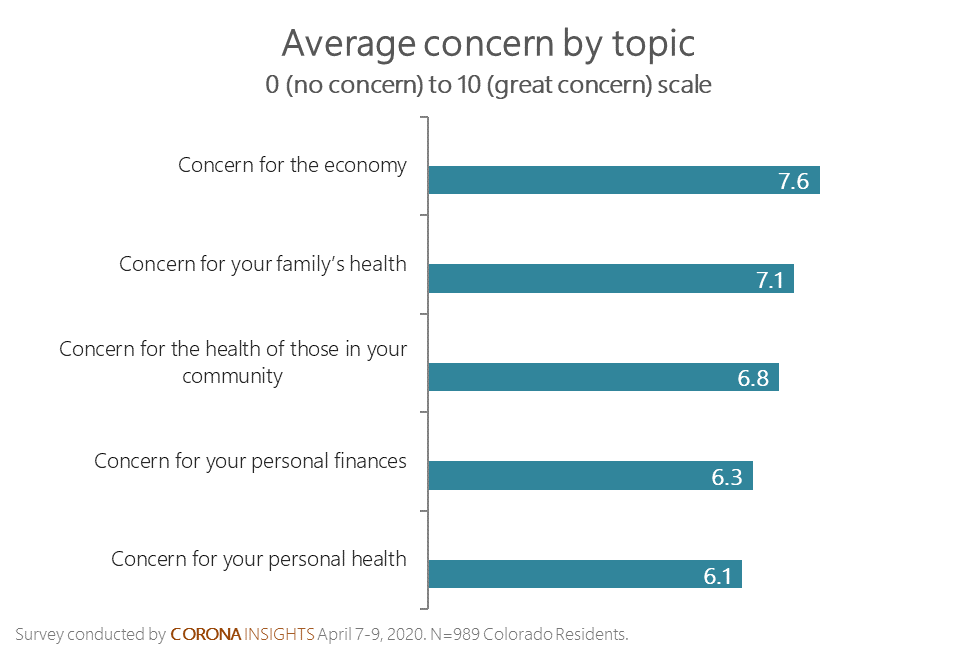
While Coloradans expressed levels of concern at the higher end of the scale for each item, worries about the community at large exceeded personal concerns. On average, Coloradans were more concerned with the broader economy than their personal finances or health. However, in the next section we will see that a significant proportion of the state is coping with personal physical and mental health challenges under quarantine.
Challenges of Shelter in Place
Next, we wanted to know the most common challenges residents faced during the pandemic. First and foremost, 43% of respondents identified access to basic living supplies like groceries as a challenge brought on by COVID-19.

Many Coloradans said taking care of their personal mental or emotional health (35%) and their personal physical health (30%) were challenges facing them due to the pandemic. We drilled down to ask respondents about their feelings during shelter in place and about a quarter said they had felt angry/frustrated (24%), while 23% reported feeling depressed. However, these were less frequently identified than feeling anxious (34%) or most commonly, bored (42%).

In reference to physical health, Coloradans were split evenly with 25% saying they exercised more and 25% saying they exercised less during shelter in place. Additionally, more respondents (25%) admitted to eating healthy less often than said they were eating healthy more often (18%). Finally, 17% of the state said they were consuming more alcohol and only 1 in 10 said they used more marijuana.
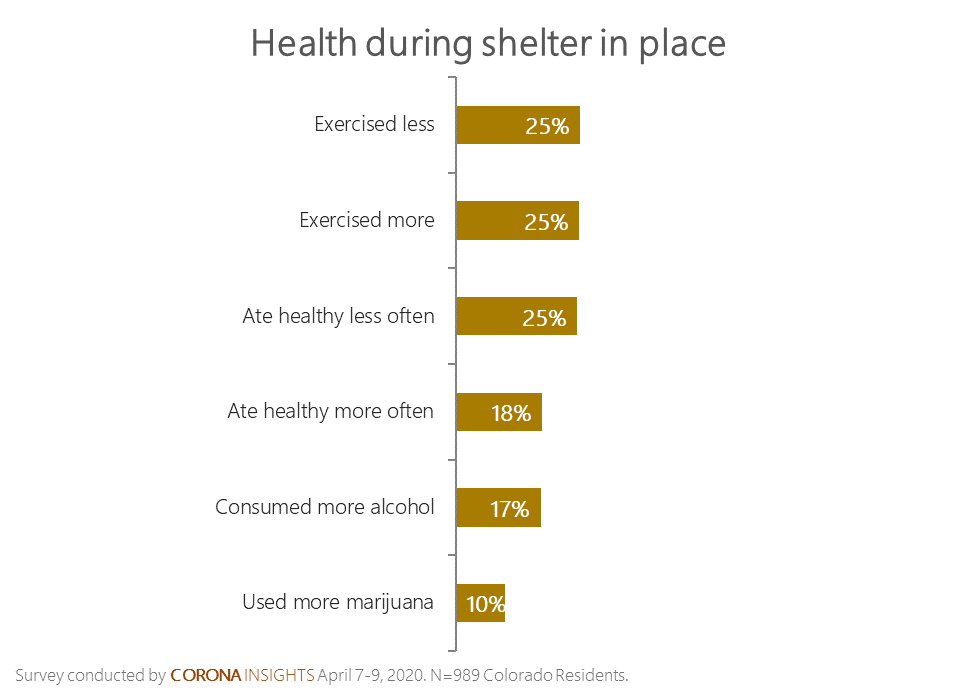
Passing the Time at Home
With so many of the most common leisure activities unavailable, what have Coloradans been doing with their time? Try not to feel bad if you haven’t had the most productive shelter in place experience, only 8% of the state’s residents said they have carried out more intellectual pursuits and just 7% claimed to have learned new skills. However, about half (51%) said they had binge-watched TV or movies.
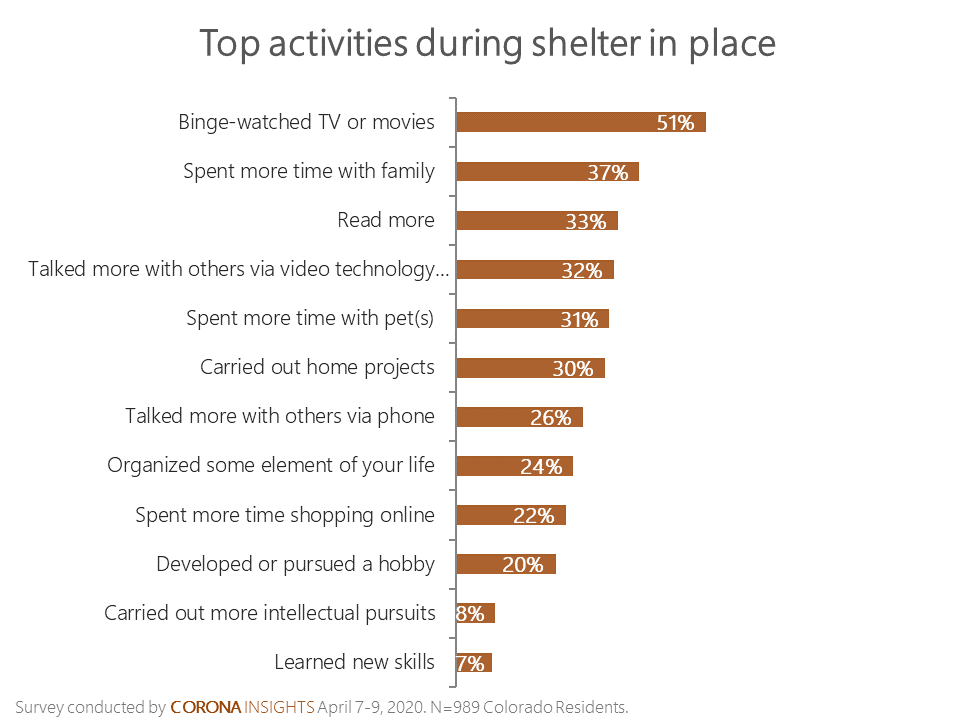
About one third (32%) of the state say that they have talked more frequently with others for social purposes using video technology. In total, 64% of Coloradans say they have used video technology for socializing during shelter in place and one quarter of the state said that video technology satisfied their need for social connections.
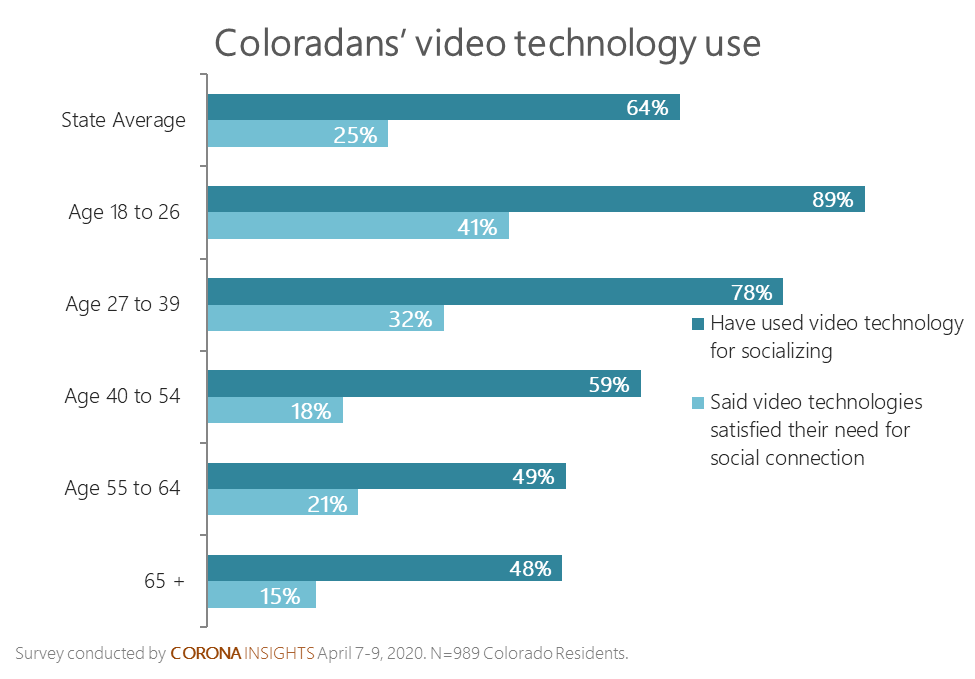
However, not all the state’s residents are seeing the benefits of video conferencing technology. Less than half of Coloradans above 55 years old have used video technologies like Zoom or Facetime for socializing and only 15% of those 65 and older said these interactions satisfied their need for social connection.
Our blogs in the days to come will explore these and other topics in greater depth. See part two of this first entry to learn how the state’s residents have judged the government and community response to the COVID-19 pandemic.
The survey was fielded between April 7-9, 2020. Resulting data were cleaned and coded. Responses were weighted to represent the state of Colorado by geography and key demographic characteristics from the 2018 American Community Survey.
For further inquiry, please contact Corona Insights.